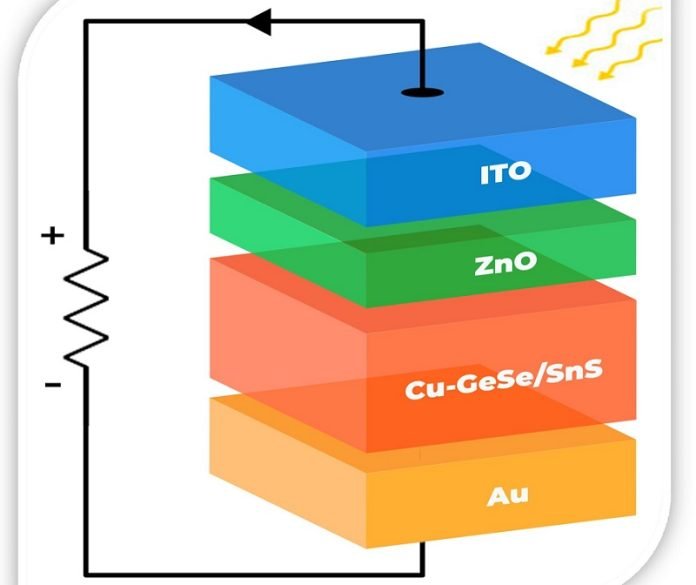
In a groundbreaking development, scientists at Lehigh University have created a new type of material that could dramatically boost the power we get from solar panels.
This new material has shown an ability to absorb sunlight and convert it into electricity with up to 190% efficiency.
This is a big deal because it means solar panels could generate almost twice as much electricity as they do now from the same amount of sunlight.
The team, led by Professor Chinedu Ekuma and doctoral student Srihari Kastuar, has been working on this project and their findings are shared in the Science Advances journal.
The secret behind this material’s impressive performance is something called “intermediate band states.”
These are special energy levels within the material that are just right for capturing sunlight and turning it into electricity.
This material is particularly good at absorbing light from both the visible part of the spectrum (the light we can see) and the infrared part (the heat we can feel).
Normally, solar cells can convert only 100% of the sunlight they absorb into electricity, meaning one electron is generated for every photon (particle of light) absorbed.
But this new material can do more, generating more than one electron for some photons, thanks to a process known as multiple exciton generation (MEG).
The material gets its superpowers from a clever technique where copper atoms are inserted between layers of a two-dimensional material made from germanium selenide (GeSe) and tin sulfide (SnS).
This not only makes the material more efficient at converting sunlight into electricity but also opens up new possibilities for creating better, more efficient solar panels.
Professor Ekuma, an expert in the science of materials, used computer models to predict how well this material would work before making it in the lab. The results were even better than expected, making this new material a very promising candidate for future solar panels.
While it will take more research and development to get these materials from the lab to our rooftops, the technique for creating them is already well understood by scientists.
This breakthrough could lead to solar panels that are more efficient, helping to meet our energy needs in a cleaner, more sustainable way.
This discovery is exciting news for everyone interested in renewable energy and could help in the fight against climate change by making solar power even more effective.
Source: Lehigh University.



